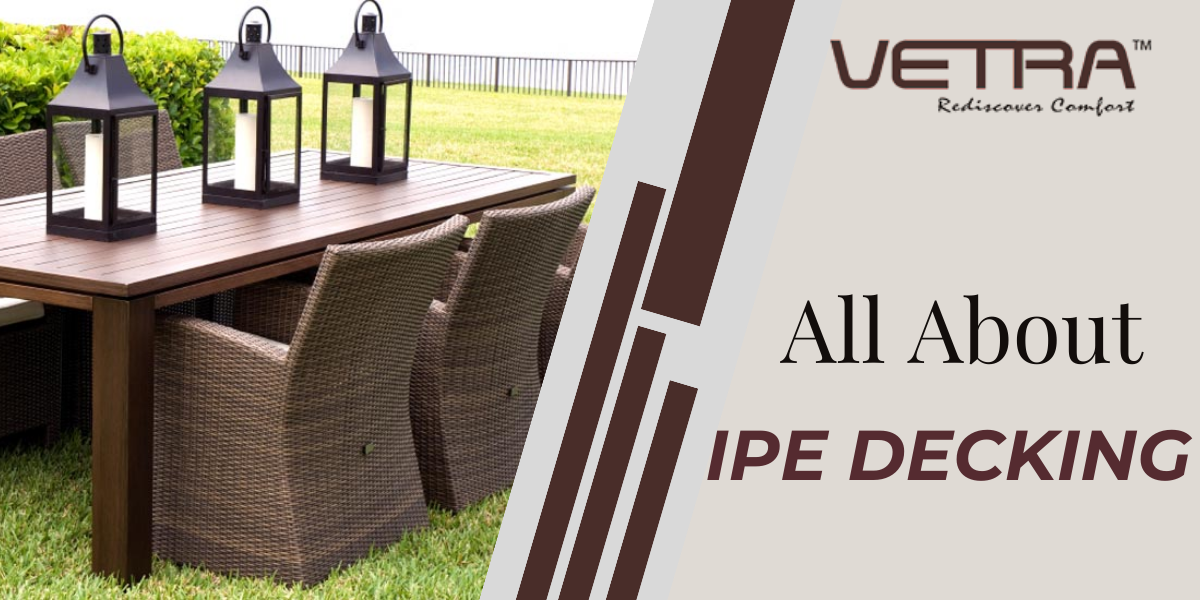
IPE decking is a type of outdoor decking material made from the wood of the IPE (Tabebuia) tree known for its durability and natural beauty. IPE is a hardwood species native to South America. It is highly regarded for its exceptional durability, strength, and resistance to rot, decay, and insect damage. IPE decking boards are dense, tightly grained, and have a rich reddish-brown color. They are often used for outdoor decking due to their ability to withstand harsh weather conditions, including extreme heat, cold, and moisture.
IPE decking requires regular maintenance, such as periodic cleaning and application of protective sealants, to maintain its appearance and longevity. Top furniture brands have ventured into the decking business. They consider the following to achieve finesse:
Material:
IPE is a hardwood that originates from South America, primarily from countries like Brazil. It is known for its density, which gives it excellent durability and resistance to rot, insects, and decay. IPE wood has a rich brown color with hints of red and dark streaks, providing an elegant and luxurious look.
Durability:
IPE decking systems are highly regarded for their exceptional durability. The wood is naturally dense and has a high level of hardness, making it resistant to wear, scratches, and impacts. It can withstand heavy foot traffic and is also resistant to mold, mildew, and decay. With proper maintenance, IPE decking can last for several decades.
Strength:
IPE wood is incredibly strong, making it suitable for areas with high load-bearing requirements. It has a high density that contributes to its strength and stability. This strength makes IPE decking systems an excellent choice for commercial applications, such as boardwalks, bridges, and public spaces.
Maintenance:
While IPE decking, like all weatherproof furniture, is highly resistant to decay and rot, it still requires regular maintenance to preserve its appearance and prolong its lifespan. This includes periodic cleaning, applying a protective finish or sealer, and regular inspections for any signs of damage. If left untreated, IPE decking will weather to a silvery-gray color over time.
Installation:
IPE decking can be installed using various methods, including hidden fastener systems, screws, or nails. Hidden fasteners provide a cleaner and more seamless appearance since the fasteners are not visible on the surface. Pre-drilling is recommended to prevent splitting due to the wood’s density.
Environmental Considerations:
While IPE is a natural and renewable resource, it is essential to consider the sourcing of wood. Sustainable forestry practices and responsible harvesting help minimize environmental impact. Ensure that the IPE wood comes from responsibly managed forests.
It’s worth noting that there are alternative decking materials available in the market, and IPE decking systems may come with a higher price tag compared to other options. However, the combination of IPE wood’s durability, strength, and natural beauty makes it a preferred choice for those seeking a long-lasting and aesthetically pleasing decking solution.
Vetra, a player in the field for over 4 decades, a popular outdoor furniture manufacturer in Delhi, master in IPE decking. Vetra IPE attributes to its superior characteristics, its rich brown to amber shades, fine texture, and interlocking grains, not to miss its non-slip feature. Regular deck oiling can improve the quality and life of the IPE decking.
